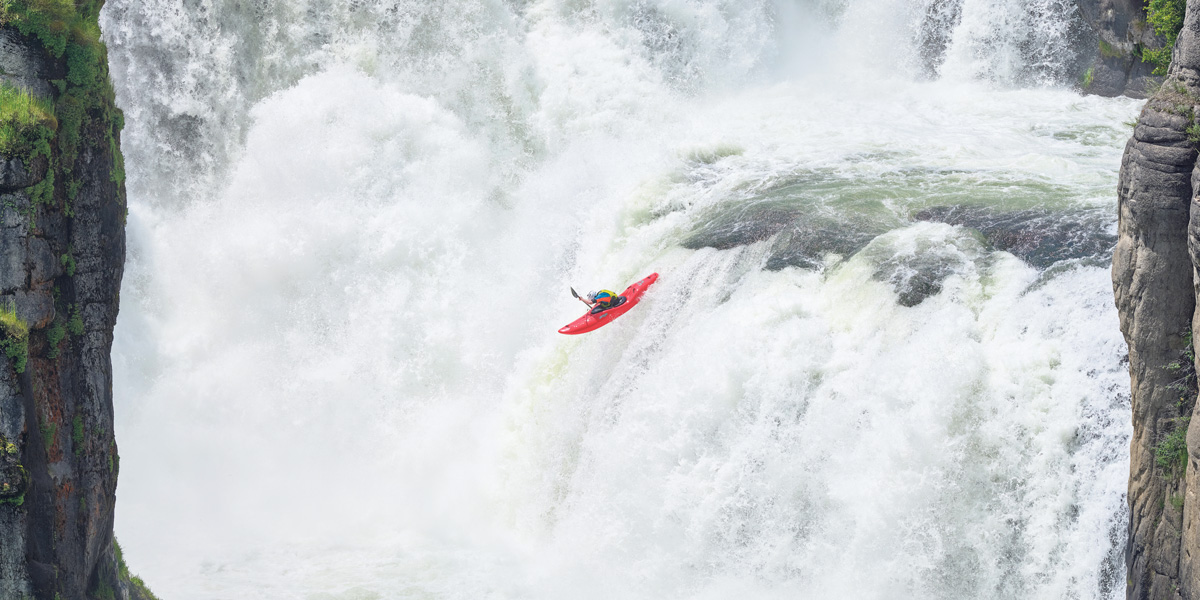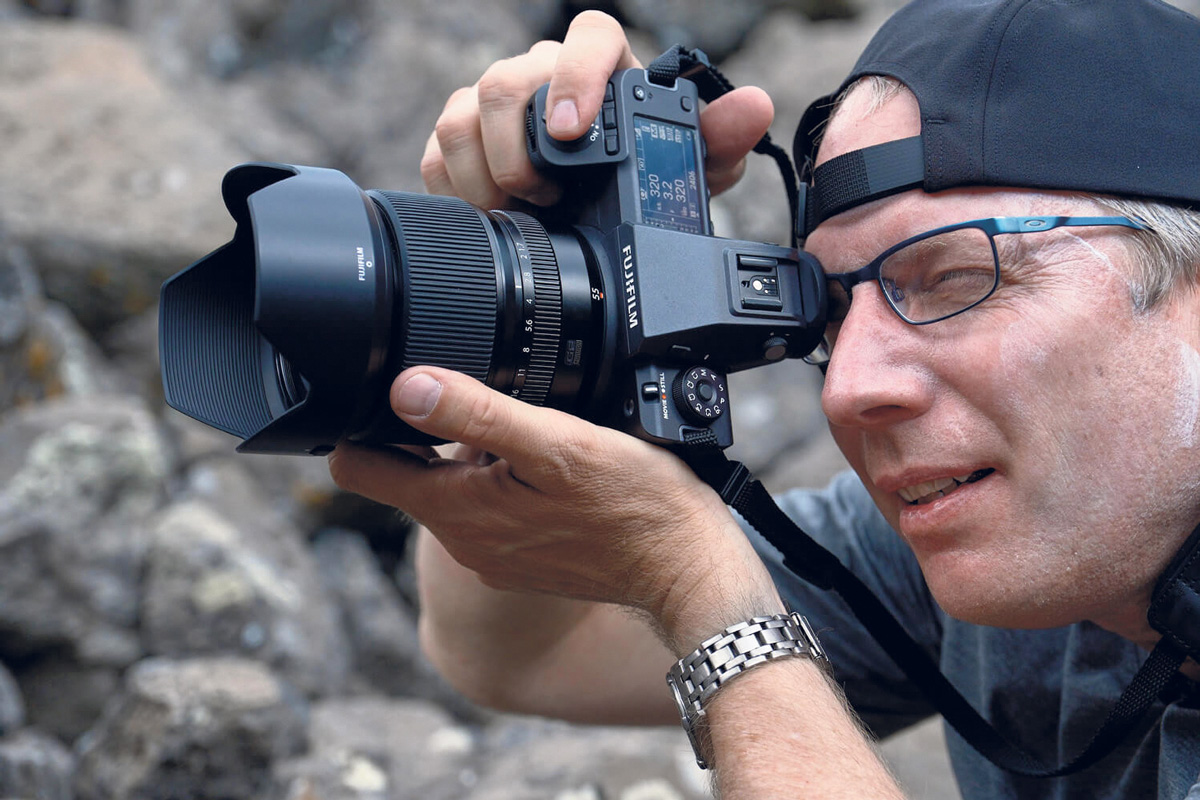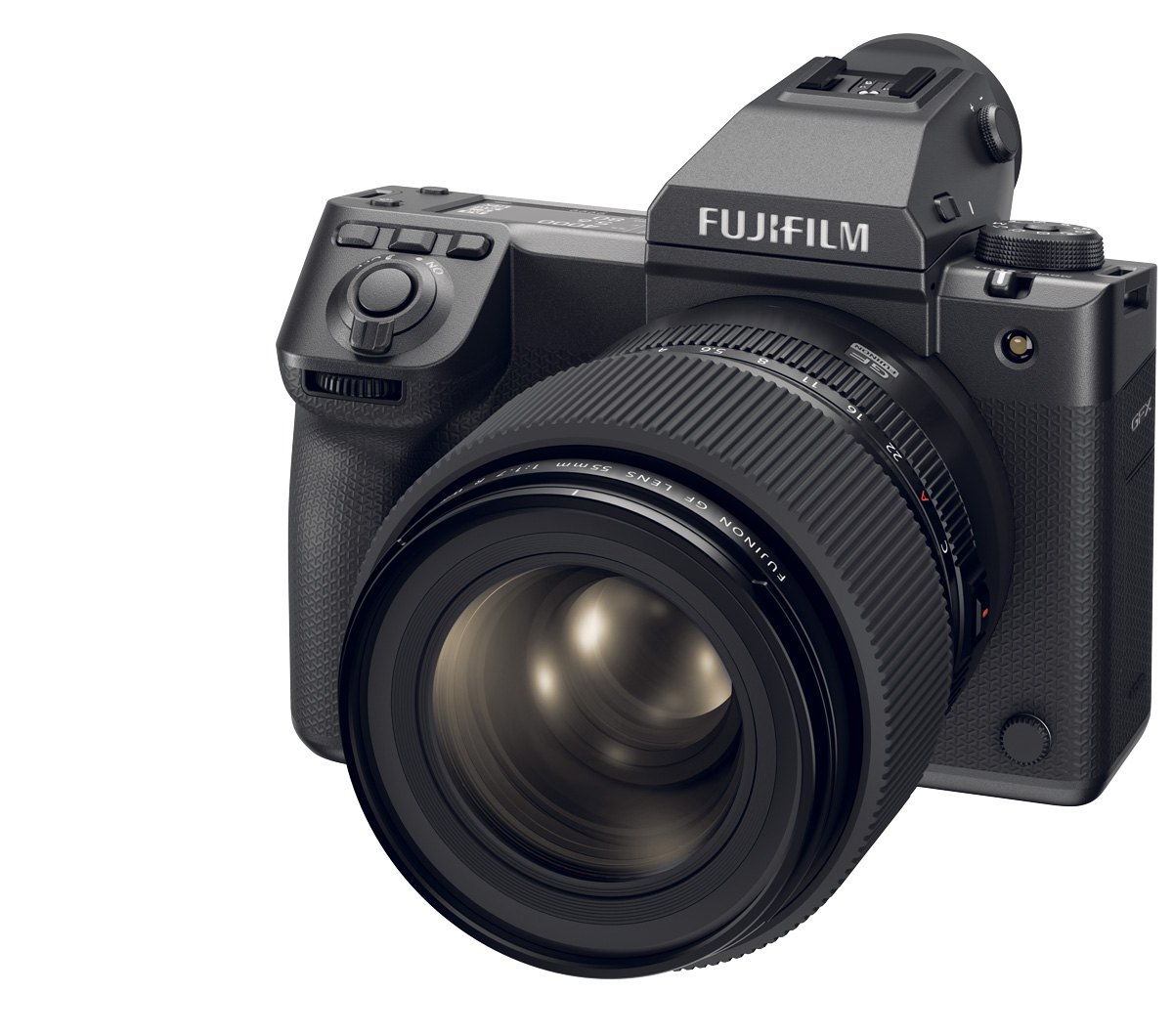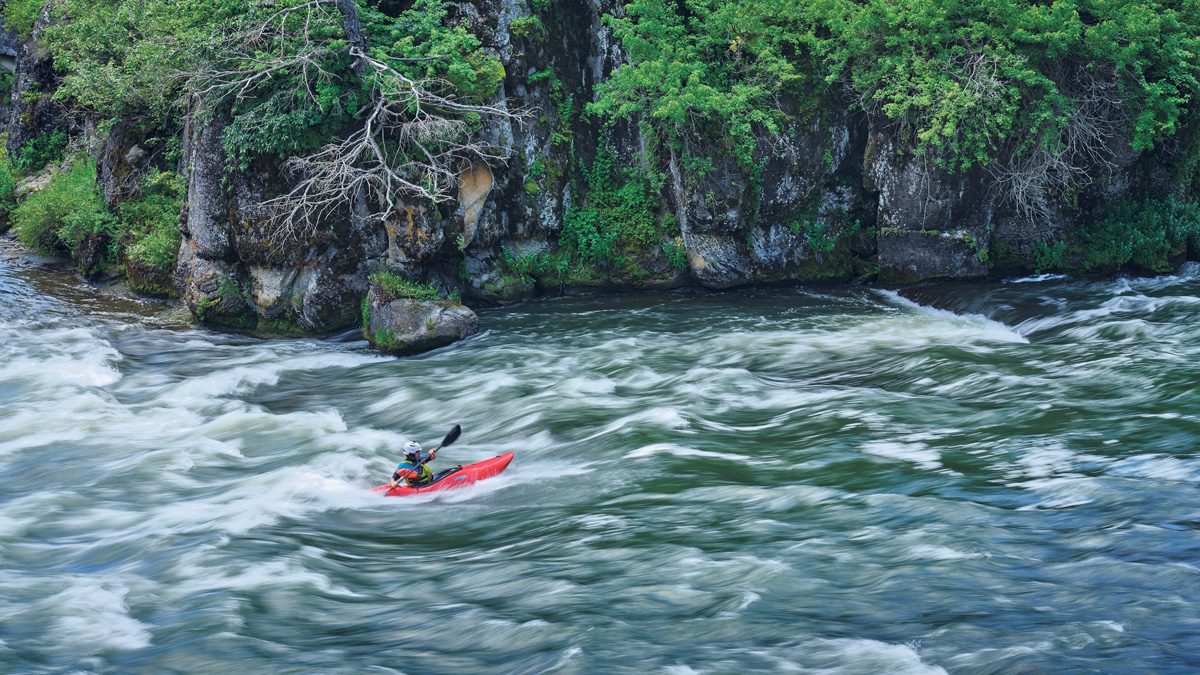
A safe bet in a world of danger
Posted on Dec 19, 2023
Acclaimed adventure photographer Michael Clark explains why he can depend upon the FUJIFILM GFX100 II when out making awe-inspiring images in unforgiving environments
Advertisement feature
If a photographic calling involves putting yourself on the line, it’s all the more important to have a camera that can be relied upon. While the FUJIFILM GFX100 II has been described as medium format for the masses, offering ultra-high-quality, 100-megapixel imagery at the most affordable price point yet, it’s proving perfect for the singular vision and pursuits of adventure photographer Michael Clark.
Being called ‘the Indiana Jones of adventure photography’ is a lot to live up to. Clark manages the rare feat of producing still images that depict plenty of life and motion; even with a straight, face-on portrait, his shots seem to jump off the screen. As a professional photographer, you’re always trying to stand out from the crowd.
“Often, on assignments, art directors see me do things that terrify them,” he elaborates. “This could range from rappelling off huge cliffs to hanging out of hot-air balloons, swimming into huge waves – and all of the various things you have to do to get the image in the adventure sports world that I work in. With my climbing background, I don’t consider these things all that risky, but for those without decades of experience, these shenanigans might seem pretty extreme. On the flip side, though, I have now used up eight of my nine lives and can certainly hold court with all of my near-death stories.”
A camera with global appeal
Like his big-screen counterpart, Clark’s work involves an element of globetrotting. He had just returned from teaching a photo workshop in Japan when we spoke – and has been working with a full production version of the GFX100 II for six weeks. A behind-the-scenes video for an assignment he embarked on for the camera’s launch can be seen over on Fujifilm’s YouTube channel – it’s an eye-opening watch.
“I did use the new GF55mm f/1.7 R WR for the launch assignment this summer and it is a wicked-sharp, stellar lens,” he adds. For getting such action, he’s finding a top speed of 8fps, and the fact that AI face and subject detection are more reliable than before comes in seriously useful indeed.
“The 8fps frame rate, faster autofocus – and specifically the autofocus tracking capabilities – make this, for me, the first ever medium format sports camera,” he enthuses. “The buffer, along with the frame rate, means this camera is a serious action rig.”
“AF is massively improved. Nothing else in the medium format space compares. In fact, all other brands of medium format camera are in the Stone Age when it comes to autofocus on the GFX100 II. It isn’t just that the AF tracking capabilities are vastly improved, the subject detection capabilities of this camera are also superb.”
The fact that the grip on the GFX100 II is now an optional extra likewise works for Clark, as he explains: “I often want to carry a smaller, yet robust camera without a grip. Basically, all of its improvements come into play, since I try to use technology to further my craft and push the camera as much as possible to create something new and exciting.”
While, of course, there are smaller cameras still, medium format photography – with the huge-resolution files achievable – has long been an attraction for the award-winning photographer. When the original GFX100 was launched in 2019, he switched over to that model right away.
“Twenty-eight years into my career, I’m mostly a commercial photographer,” Clark continues. “Hence, some of my clients want high-resolution images for their advertising campaigns, as they might make giant prints or life-size point-of-purchase displays. The new advertising reality is that a client may ask me to photograph things a little more pulled back than normal, so that they can create long, thin panoramas for website headers and banners – or crop extreme 16×9 verticals out of the image for Instagram stories, social media apps and so on.
“When I did this with 46-megapixel cameras years ago, you’d end up with a two- or three-megapixel image. Larger GFX files now give you a lot more resolution when it’s needed. Plus, with their smoother tonal transitions, 16-bit files offer improved image quality and, especially for portraiture, give you a much nicer image file to work with in post-production.
“The second reason for a high-res camera is that I am making giant fine art prints. I just had a client order an eight-foot-tall image, and since it was made using a 102-megapixel GFX camera it looked incredible. I hardly even bother shooting verticals with the GFX cameras any more because a vertical cropped out of a horizontal image is still nearly 60 megapixels. Likewise, a panoramic image cropped down from the 4×3 aspect ratio to 16×9 is still 74 megapixels.”
High-resolution hijinks
Another big improvement finding favour with photographers on the FUJIFILM GFX100 II is its 9.44 million dot electronic viewfinder (EVF). Clark acknowledges that “when I first saw the new EVF in the GFX100 II I was blown away at how crisp it looked. It especially comes in handy when zooming into images and checking detail.”
Fujifilm’s built-in Film Simulation effects are another of its unique features, with Reala Ace – which is known to most photographers in the west as FUJIFILM Reala – newly added here. Described as having a very similar look to Provia film, it’s
a slightly less saturated result.
“I pretty much always get Raw image files and have my camera set to the standard Provia Film Simulation,” the photographer divulges. “For portraits, I will use Neg Standard as that simulation has more accurate skin tones. I’ve tried out the new Reala Ace and found it to be really nice. It might end up being my default setting but I am still tinkering. Because I work with Raw image files, I’m typically setting the Film Simulation as a starting point in Lightroom or Capture One.”
Clark does also occasionally work with video, too, and can see the potential in the GFX100 II for future assignments, with its ability to get 4K/60p – or 8K-resolution video at 24 or 30p. “We’ve used incredibly expensive cinema cameras in the past, but the video output from the GFX100 II is so good that we’ll have to really consider that for future gigs. I absolutely love the new 2.35:1 ratio, 5.8K Cine mode for the cinematic look it creates. Also, the fact that you can basically use any lens on the GFX100 II, even high-end PL mount cine lenses, is a huge deal for larger projects. With the removable EVF, you can now essentially just swap out the cinema camera with a GFX100 II body and it works seamlessly.
“And lastly, the fact that the camera uses CFexpress Type B memory cards and can record ProRes HQ and other high-end video formats internally makes it a lot easier to take a small set-up outdoors for adventure sports. I have an ice-climbing project this winter and the GFX100 II will be going on all of my assignments from now on.”
Discover more reasons why the FUJIFILM GFX100 II could be perfect for recording your own tales of derring-do at: fujifilm-x.com.
Originally featured in Issue 112 of Photography News.
Don’t forget to sign up to receive our newsletter below, and get notified about the new issue, exclusive offers and competitions.
Have you heard The Photography News Podcast? Tune in for news, techniques, advice and much more! Click here to listen for free.










